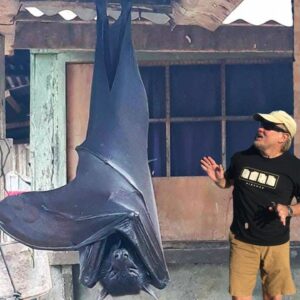In the dark depths of the world’s oceans, various horrors lurk. Here are some of them:
The hairy frog, also known as the Wolverine frog or terror frog, originates from regions including the Democratic Republic of the Congo, Cameroon, Equatorial Guinea, Nigeria, Gabon, and potentially Angola. It thrives in habitats such as lowland tropical or subtropical moist forests, rivers, plantations, croplands, and heavily degraded former forestry areas. What sets this frog apart is not just its furry appearance but also its unique defense mechanism.
Blue-tongued skinks belong to the Australasian genus Tiliqua, housing some of the largest members of the skink family (Scincidae).

They are commonly referred to as blue-tongued lizards or simply blue tongues or blueys in Australia. As these common names suggest, a prominent feature of the genus is a large blue tongue that can be shown as a deceptive warning to potential enemies.
Mutant fish from Russia: The type of mutated fish apparently found in a Chernobyl reactor pond is seriously creepy. While some people think it’s more likely to be the result of a mutation, others think it’s a natural creature. But what do you think? We’d love to hear your thoughts on it.
Komondor Dog: The Komondor, also known as the Hungarian Sheepdog, is a large, flank-colored Hungarian cattle guard dog with a long, corded coat.
The Komondor averages 25 1/2 inches (females) to 27 1/2 inches (males) at the shoulder and weighs between 80 and 120 pounds (36 to 54 kilograms). The dog has a medium-sized head, with facial features covered by tufts of hair. The body is muscular, and the tail is straight.
A furry animal that is both adorable and terrifying has taken the internet by storm. It’s called the Venezuelan poodle moth, and for the love of all things holy, we hope it’s real. The new species of moth, called the Venezuelan poodle moth, is quite a mystery. It was discovered in 2009 by zoologist Dr. Arthur Anker from Bishkek, a city in Kyrgyzstan.





